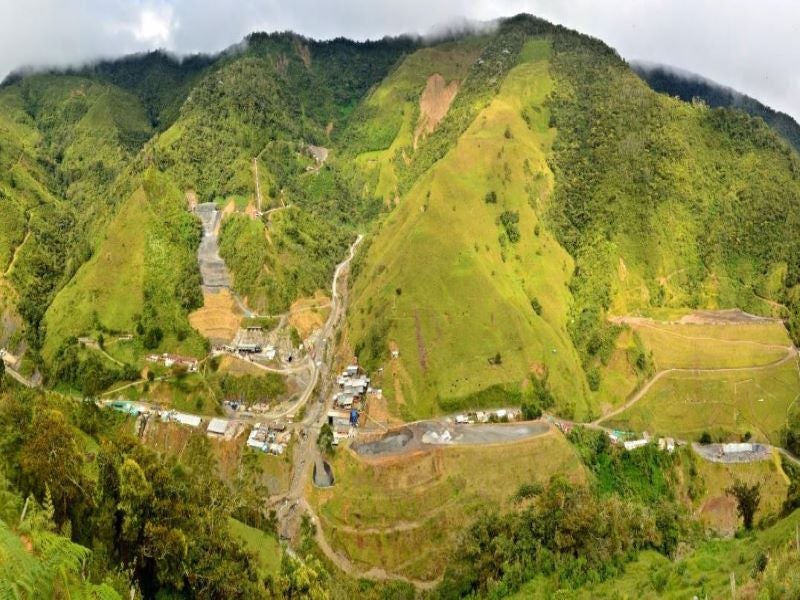The El Roble mine is the only operating copper mine in Colombia which has been in production since 1990. The underground copper-gold mine is owned and operated by Minera El Roble (MINER), a subsidiary of Atico Mining.
The copper mineralisation at the project area was first discovered with the discovery of the Santa Anita deposit, which is located approximately 6km south of the current El Roble mine, in 1970.
Minas El Roble, which was incorporated in 1972, began exploiting the El Roble deposit at a mining rate of 30tpd. The company entered into a partnership with Nittetsu Mining Company of Japan in 1986, while C. Itoh & Company of Japan joined the partnership in the next year.
Subsequently, Minas El Roble changed its name to Minera El Roble (MINER) with the departure of the Japanese partner companies in 1997, while Atico Mining acquired the company in November 2013.
The mine produced 16.8 million pounds (Mlbs) of copper and 10,482 ounces (oz) of gold in 2019.
Atico Mining secured approximately a £1.9m ($2.5m) term loan from Export Development Canada (EDC) for the completion of a new dry stack tailings project for the El Roble mine in October 2020.
Project location and geology
The El Roble mine is located in the Chocó department, approximately 3km north of the town of Carmen de Atrato, Colombia.
The project area consists of seven mineral concessions covering approximately 6,355ha.
The El Roble copper-gold deposit is hosted within the submarine mafic volcanic rocks, black to grey chert, overlying deep‐water sedimentary rocks, and sandstone‐shale turbidites belonging to the Cretaceous Cañas Gordas Group.
The deposit lies at the contact between the mafic volcanic flows of the Barroso Formation and the silicified felsic tuffs and pelagic sediments of the Penderisco Formation.
Mineralisation and reserves
The copper-gold mineralisation at El Roble occurs as volcanic massive sulphides (VMS). The Zeus lense is the biggest of the deposits located at elevations up to 1,875m above the sea level (masl) with an average thickness of 35m.
The El Roble mine was estimated to hold 1.47 million tonnes (Mt) of proven and probable reserves grading 3.40% copper and 1.88 g/t gold, at a cut-off grade of 1.93% copper equivalent as of June 2018.
Mining operations at El Roble
The principal mine adit at El Roble is located within a kilometre of the process plant at an elevation of 1,850 metres above the sea level (masl), while a ventilation intake and the main haulage access to the underground mine is located at 1,880masl. Secondary access located at the 2000 Level (masl) serves as the primary ventilation exhaust.
The Zeus deposit located approximately 450m below the mountain topography is the deepest deposit to be mined using the drift‐and‐fill mining method. Access to the Zeus deposit is via the main ramp from the 1,880masl with a nominal decline of 12%. The deposit is accessed using 4m x 4m cross-cuts and sub-ramps at vertical intervals ranging from 45m to 60m.
The Zeus deposit is divided into various blocks, each separated by 5m thick horizontal pillars covering the entire deposit. Each block is divided into primary and secondary stope blocks.
Mineral processing
The El Roble processing plant has a rated nominal throughput capacity of 850 tonnes per day (tpd). It houses conventional crushing, grinding, and flotation circuits to produce the copper‐gold concentrate.
The run‐of‐the-mine (ROM) ore material undergoes primary crushing in an Otsuka single-toggle type jaw crusher, while the secondary and tertiary grinding is done in cone crushers. The crushed ore is then introduced into a ball mill from where the pulp is piped to the main processing plant by gravity to undergo flotation.
The feed from the ball mill is introduced into an OK‐20‐style flotation cell which then feeds an OK‐30‐style floatation cell. The overflow from the floatation circuit is sent to the concentrate thickener while the underflow is redirected to two OK‐8‐style flotation cells. The overflow is then introduced into the concentrate thickener while the underflow is reported to eight Denver 100‐style flotation cells for further classification and regrinding.
The concentrate thickener uses a 30ftx10ft rake thickener and eight 6ft-diameter disk vacuum concentrate filters to produce the final concentrate material. The filtered concentrate materials are sent via a conveyor belt to a storage shed from where it is further transported to a concentrate storage facility at Buenaventura, Colombia, on the Pacific coast.
Off-take agreement
MINER has a long‐term agreement with Trafigura for the supply of copper and gold concentrates from the El Roble mine.
Infrastructure facilities
The El Roble copper-gold mine site is accessible via a 3km improved gravel road connected to the 140km-long paved highway from the city of Medellin to the town of Carmen del Atrato.
The power supply for the mine is received from the national grid via a three‐phase electrical supply system at a nominal voltage of 13,200KvA. The high voltage line splits at the property boundary to feed the process plant, mine, and other infrastructure facilities.
The freshwater supply is sourced from the Archy ravine located within the El Roble surface rights.





